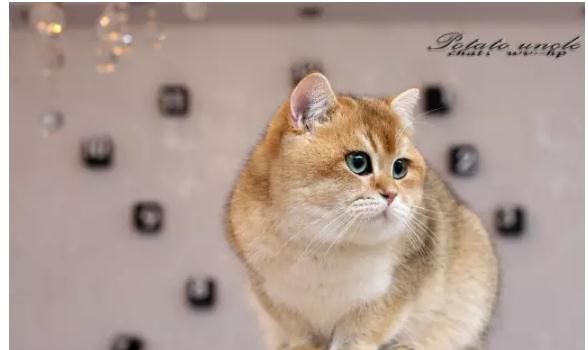Methods of care
Cat claws are used by cats to catch mice, climb and defend themselves. If the owner keeps the cat to catch mice, of course the claws should not be trimmed. If the owner has a cat as a companion animal, the cat’s claws should be trimmed frequently to avoid scratching people, clothes, furniture, flooring, etc. The cat’s claws should be trimmed once a month or so. Trimming the feet and claws should be started from a young age, once a month or so. The specific methods are as follows:
Hold the cat in your arms, grasp 1 foot of the cat with your left hand and slightly squeeze it with your thumb, forefinger and middle finger to make the claw extend. Then hold a nail clipper in your right hand and carefully cut off the transparent part of the front end of the claw, and then polish the claw with a small file on the nail clipper. When trimming, do not cut too much so as not to hurt the cat’s feet. Then cut off and polish the other claws in turn.
Giving a bath can not only keep the cat clean and beautiful, bathing can also remove some parasites from the body surface, promote blood circulation and metabolism, and play a role in disease prevention and fitness. The habit of bathing is best cultivated from a young age, and the cat will be extremely reluctant to start bathing after adulthood.

Before taking a bath, you should prepare the utensils for bathing, such as a bath tub, bath towel, detergent, comb (preferably sparse at one end and dense at the other), and brush.
The temperature of the water when bathing should not be too low, nor too high, in order not to be hot; the detergent used should not be too stimulating, so as not to irritate the skin; the British Shorthair cat should be combed before bathing on the back of the hair, to prevent tangling; bathing action should be rapid, as far as possible, in a short period of time to wash the end of the wash; after the wash, the hair should be dried with a bath towel, and the temperature is low, it is best to cover the special towel quilts or other warmth, in order to prevent the Colds.
The tongue of the Golden Tapering Lineage English Short is rough with a peculiarly barbedpapilla of tongueThe Golden Tapered English Shorthair often uses tongue licking to groom the coat. The parts that cannot be licked, such as the head, shoulders, back and neck are combed with claws. Even so, it is best to groom your cat 1 time a day. Because cats shed hair all year round, especially in the spring and fall seasons of the hair change season, the cat’s own grooming will swallow the hair into the stomach, and over time in the stomach to form hairballs, such as can not be vomited out through vomiting, and can not be discharged through the intestinal tract in a timely manner, stagnant in the stomach, the formation of hairballs clogging, affecting the appetite, and even endangering the lives of the cat.
When combing, not only comb with the hair, but also against the hair. When grooming the British Shorthair cat, the hair can be wetted with water and then rubbed to make the coat tree up and easy to comb. If the coat of the British Shorthair cat is tangled or stuck together, use the tip of the finger to straighten it out, or use a thin-toothed comb to comb it slowly and carefully. If it has been felted, use scissors to cut the felted piece into thin strips in the direction of hair growth, and then comb it with a comb. If it is badly felted, the back hairs can be cut off to allow them to grow back.
The eyes of the healthy Golden Tapered English Shorthair are bright and expressive. When the Golden Tapered English Shorthair is sick or in poor condition, it tends to be afraid of the light and tearful. In some cat breeds, the nasolacrimal duct is easily blocked and weeps. Cats that tear too much often have eye droppings attached to the corners of the eyes on the side of the nose, which can be removed by dipping a cotton pad in 2% of the water.boric acid watersolution, gently scrub it off.

The care of the Golden Tapering System English Short focuses on removing ear wax.
This is done by sterilizing the external ear canal with a 75% alcohol cotton ball and then using a cotton swab dipped in olive oil or ediblerapeseed oilIf the earwax is softened, remove it carefully with tweezers and do not break the mucous membrane of the ear canal to prevent infection and suppuration. Once the cat’s external ear canal is infected with pus, use a cotton swab dipped in hydrogen peroxide to gently scrub, scrub repeatedly until the swab is not stained with pus, and then use a cotton pad to dry the hydrogen peroxide in the ear canal. Scrub several times and the infection will be cured. If the cat has too much earwax and the cat shakes its head and scratches its ears, it should be seen by a veterinarian promptly.

